Resources
NDC-designed publications, action guides, and recommended reading to help YOU make the neighborhood yours.
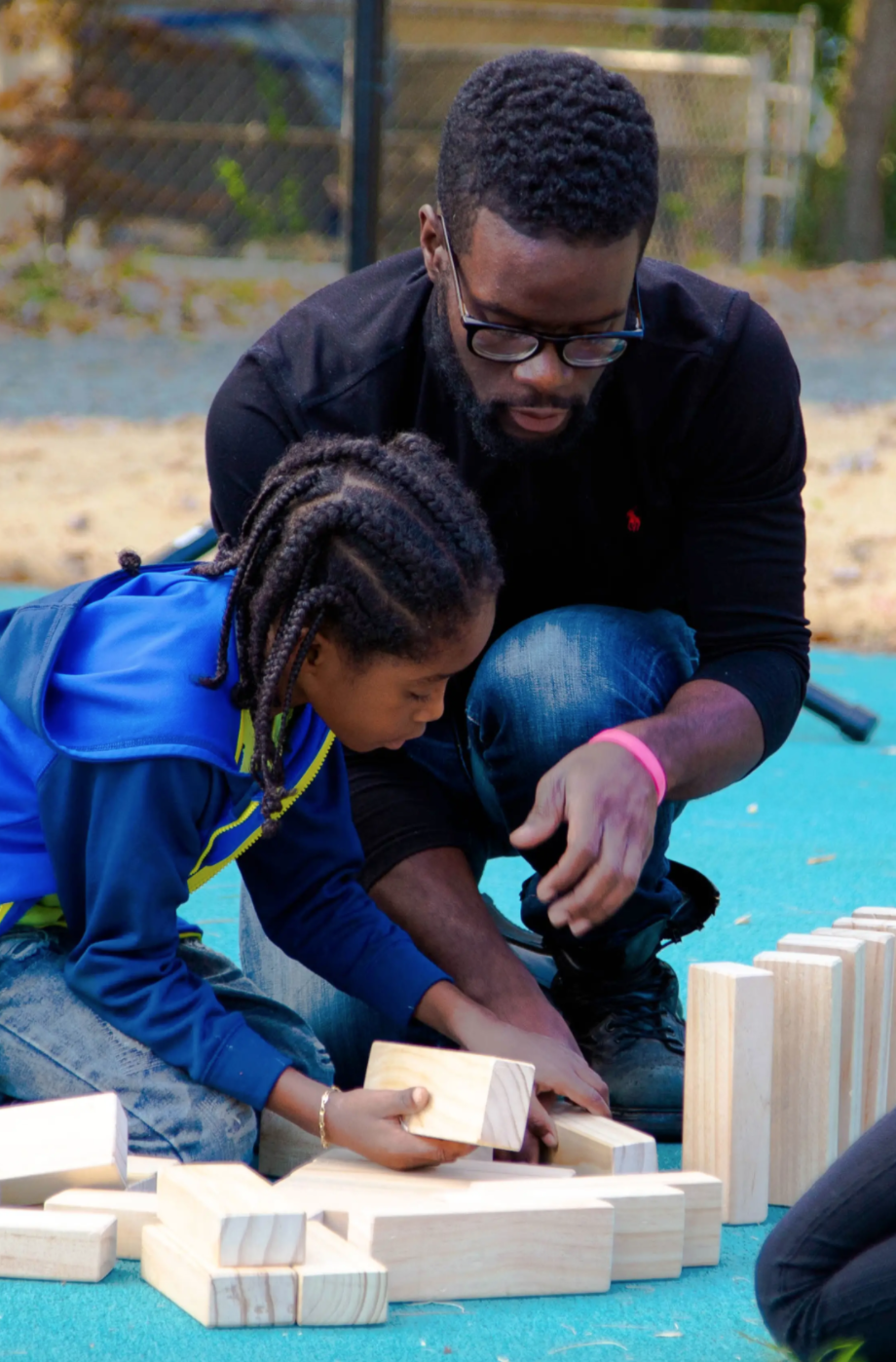
Ideas + Insights

Beyond Food Security: Cultural Healing Through Urban Farming
Urban farming addresses food deserts while fostering cultural revival and community empowerment, especially in Black and brown neighborhoods.
Read

Building Inclusive Spaces: How Accessibility Enhances Community Engagement
Balancing accessibility needs with resources can be challenging, but even small adjustments make a difference. When everyone has the same opportunity to participate, it leads to better design.
Read

Tools for Healthy Food Access
We collaborated with United Healthcare Services (UHC) to support local community projects that increase access to healthy foods. We then created three how-to guides to prompt engagement on these issues — a walk audit tool, focus group dinner tool, and healthy food survey tool — so that you can do the same in your neighborhood.
Read

Defining Placemaking: What Does It Really Mean?
From grassroots community engagement to top-down urban renewal initiatives, many embrace it as a means to foster vibrant, inclusive communities. Others offer critiques, questioning its ability to truly empower marginalized voices. Dive into our analysis.
Read

The Equitable Engagement Toolkit: Prioritizing Equity in the Community Design Process
Staff can better understand what types of methods and conversations are necessary at different points throughout a project.
Read

Hostile Architecture: The Cause and Effect of Restricting Public Space
We take a look at the motivations behind hostile architecture, its historic roots and continuing impact, and how to address it to create more inclusive public spaces.
Read

Climate Change: How the Global Issue Impacts Our Own Backyards
Kelly Fleming, our Program Director of Environmental Resilience and Landscape Design, outlines ways that local government, communities, and individuals can enact change.
READ

Fostering a Culture of Care and Maintenance in the Built Environment
When Public Works fails, who is ultimately responsible? What is fair to ask of residents and how can public spaces be set up for long-term success? See how NDC helps groups who take the onus on themselves.
READ

Restoring Equity: How Historic Preservation Efforts in Black Communities Seek to Shift the Narrative
Read about three community efforts to preserve Black history in the built environment. See how NDC’s partners are re-framing our connection to the past and changing how future stories are told and valued.
READ
Downloadable Guidebooks

Small Project Development 101 Guide
This overview of the development, design, construction, and funding process is for community leaders interested in driving equitable development in their communities.
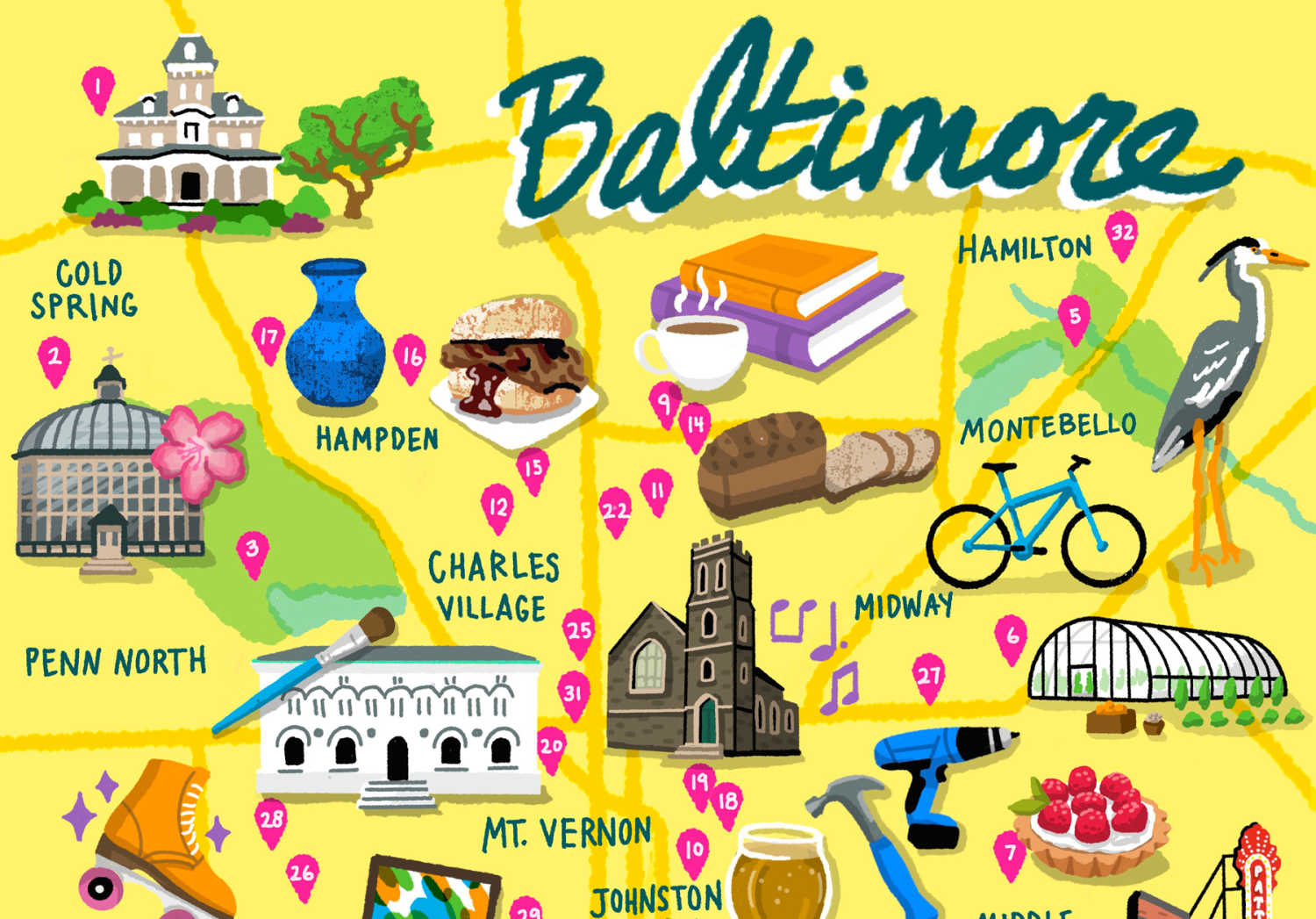
Baltimore Hidden Gems
Looking for new spots to explore in Baltimore City? Here are our team’s favorite hidden gems, with a community focus. Check out the whole map (and feel free to print it out)!

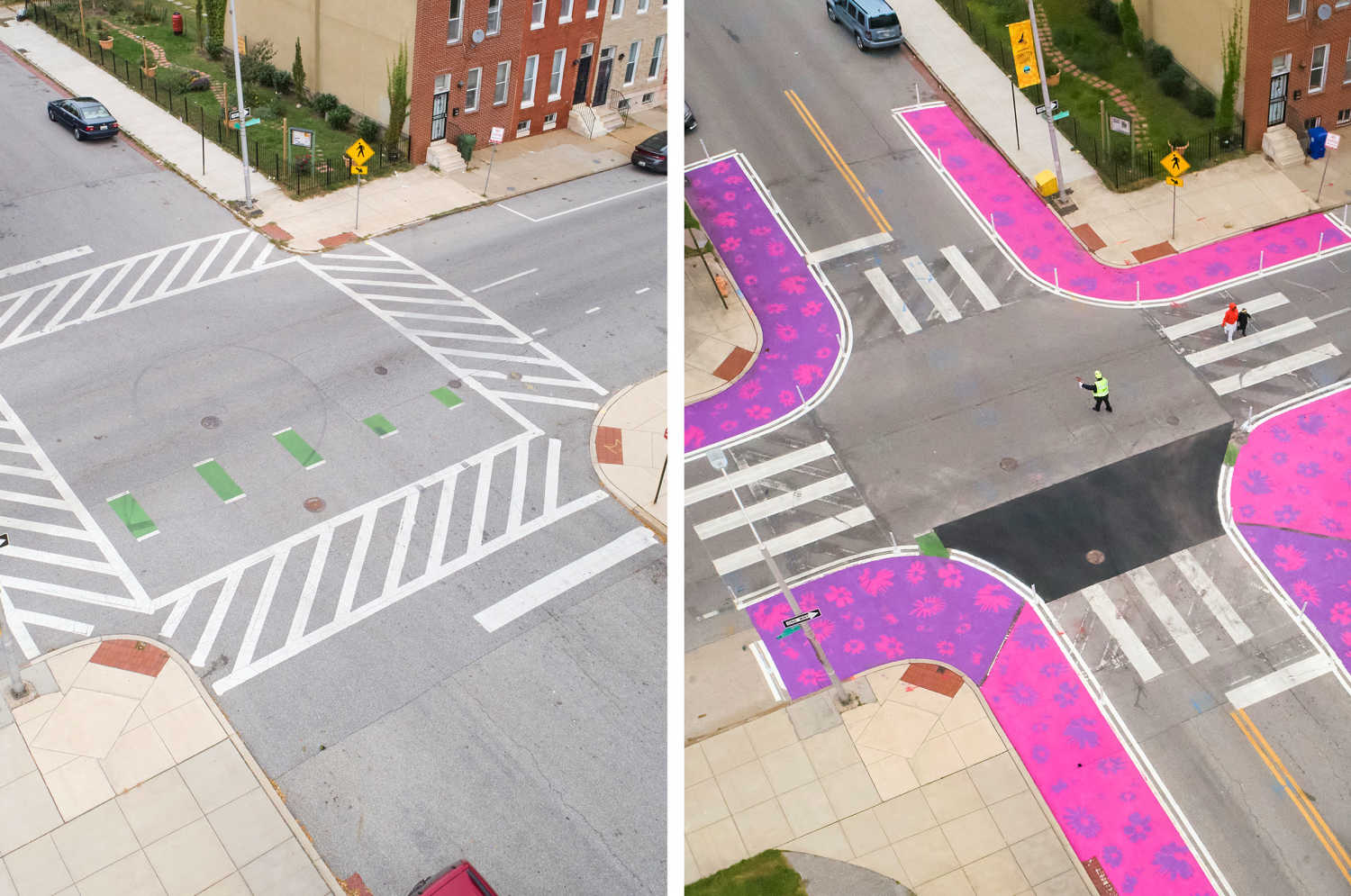
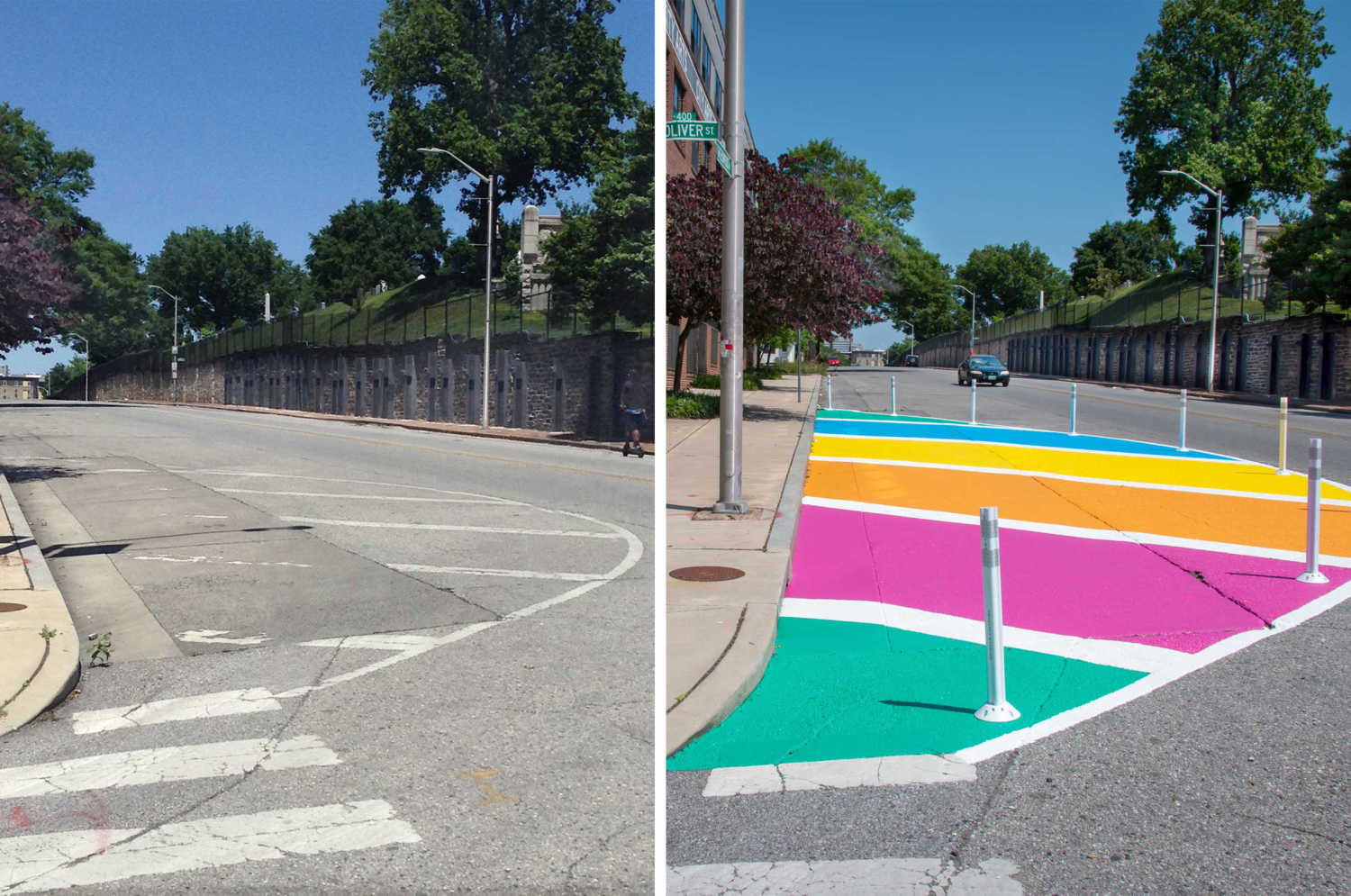
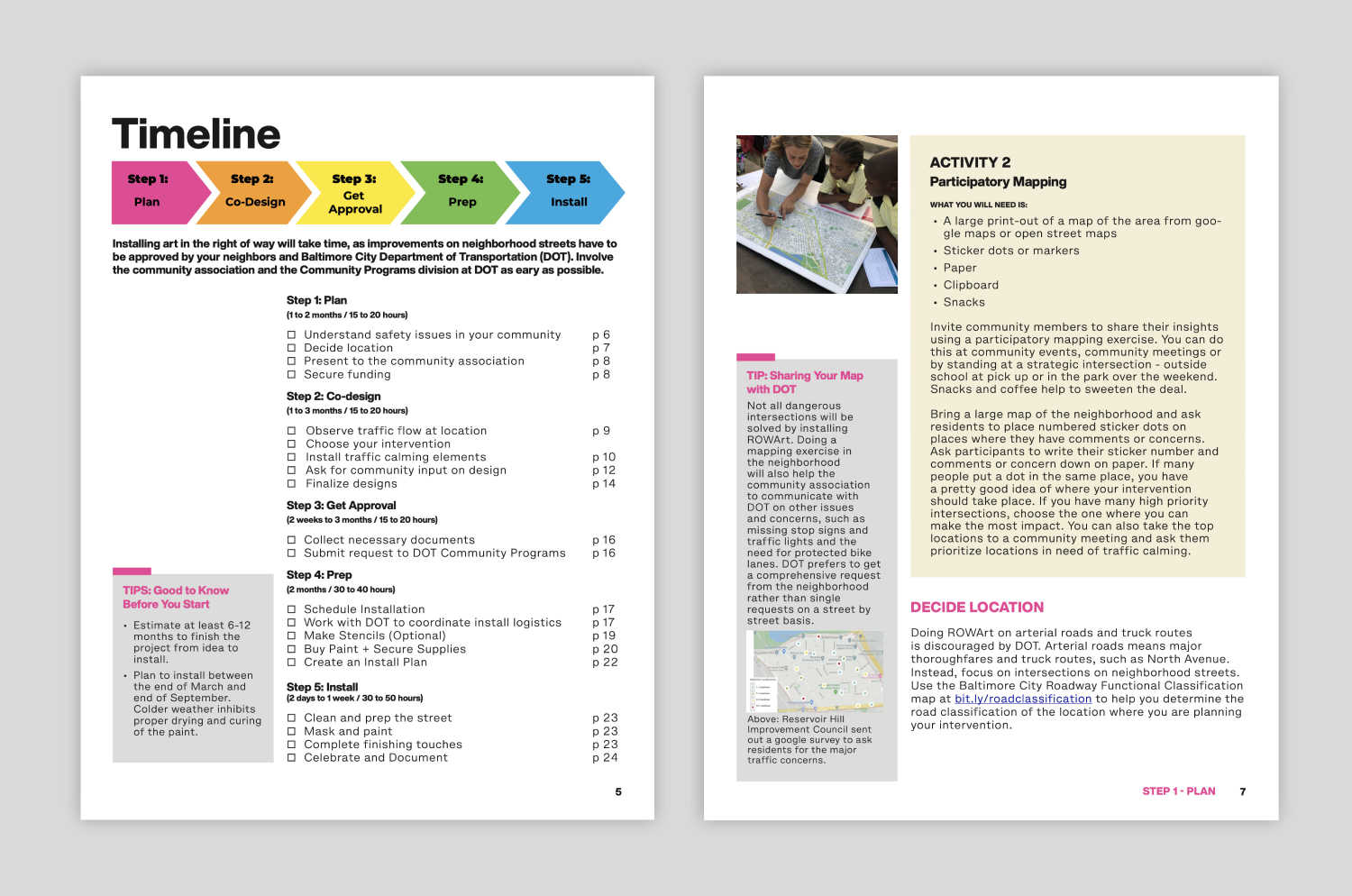
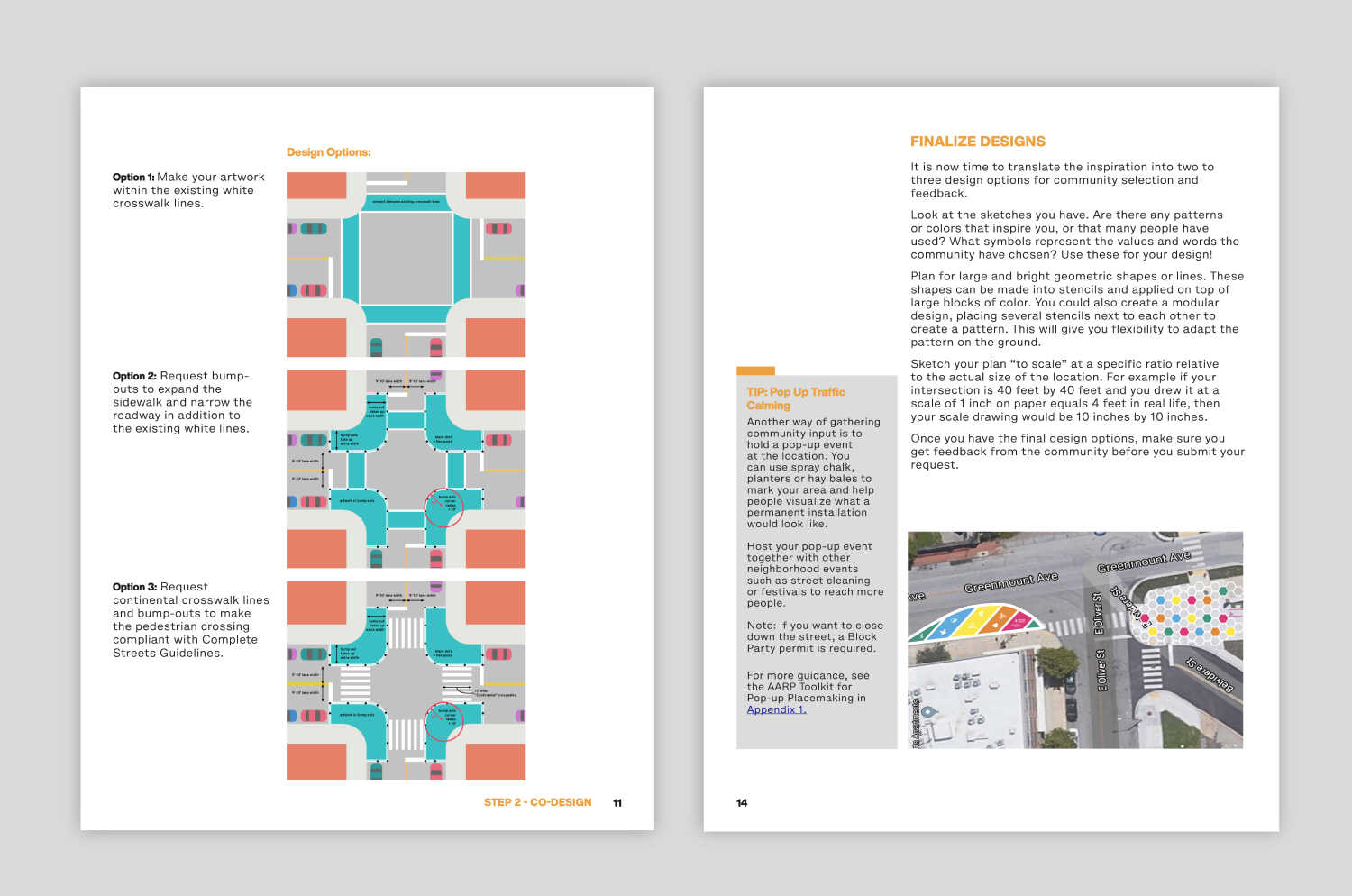
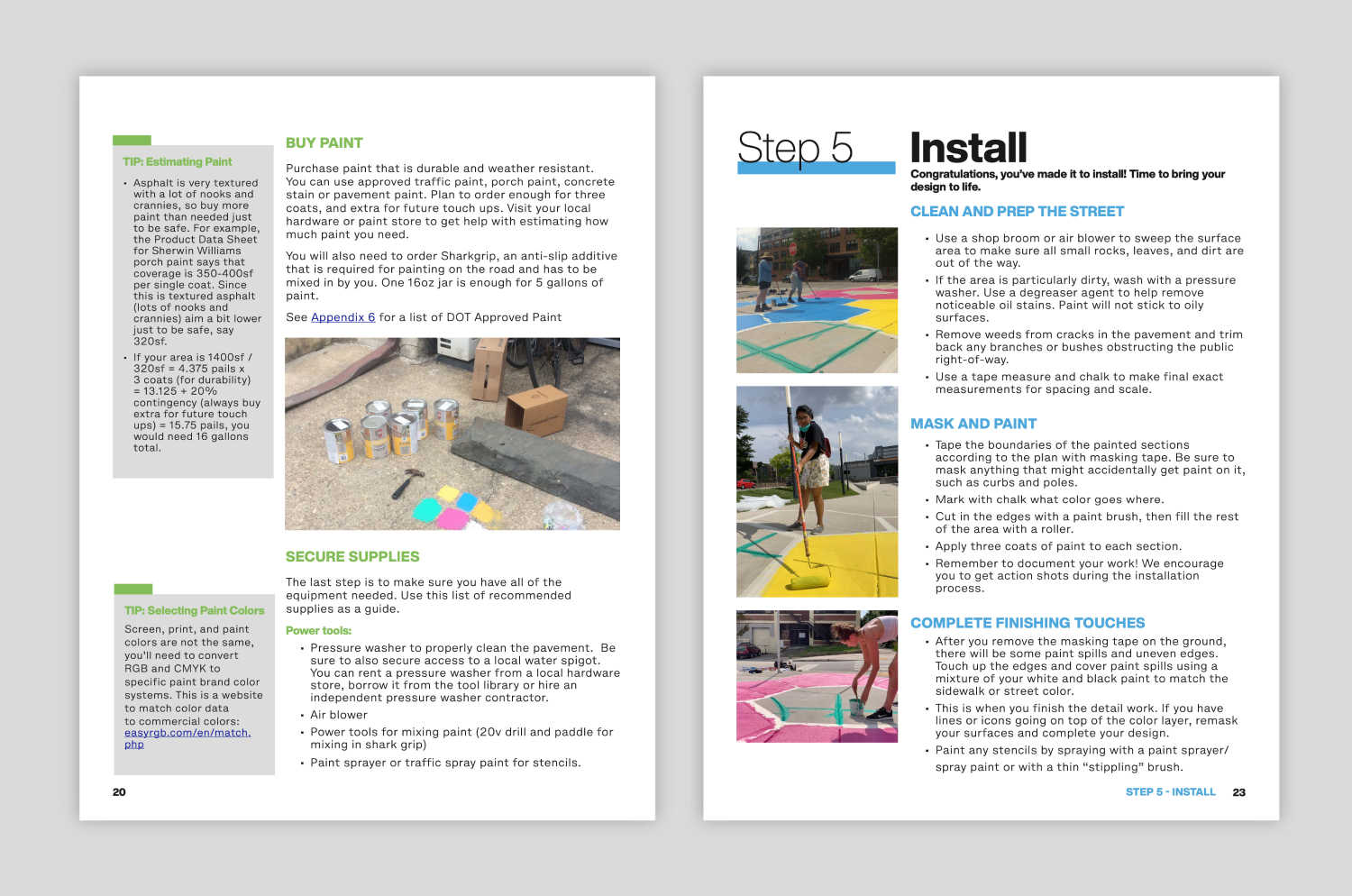
Made You Look — Art in the Right of Way Toolkit
ROW Art projects help calm traffic, beautify our neighborhoods, and increase public space for pedestrians. These interventions are affordable, easy to get permits for, and quick to install. Any community can create one! Our toolkit explains the process for Baltimore City. The Made You Look initiative started as a collaboration between MICA Center for Social Design and the Maryland Highway Safety Office, and is now stewarded by the Neighborhood Design Center.
Learn more and see example projects: MadeYouLookBaltimore.org
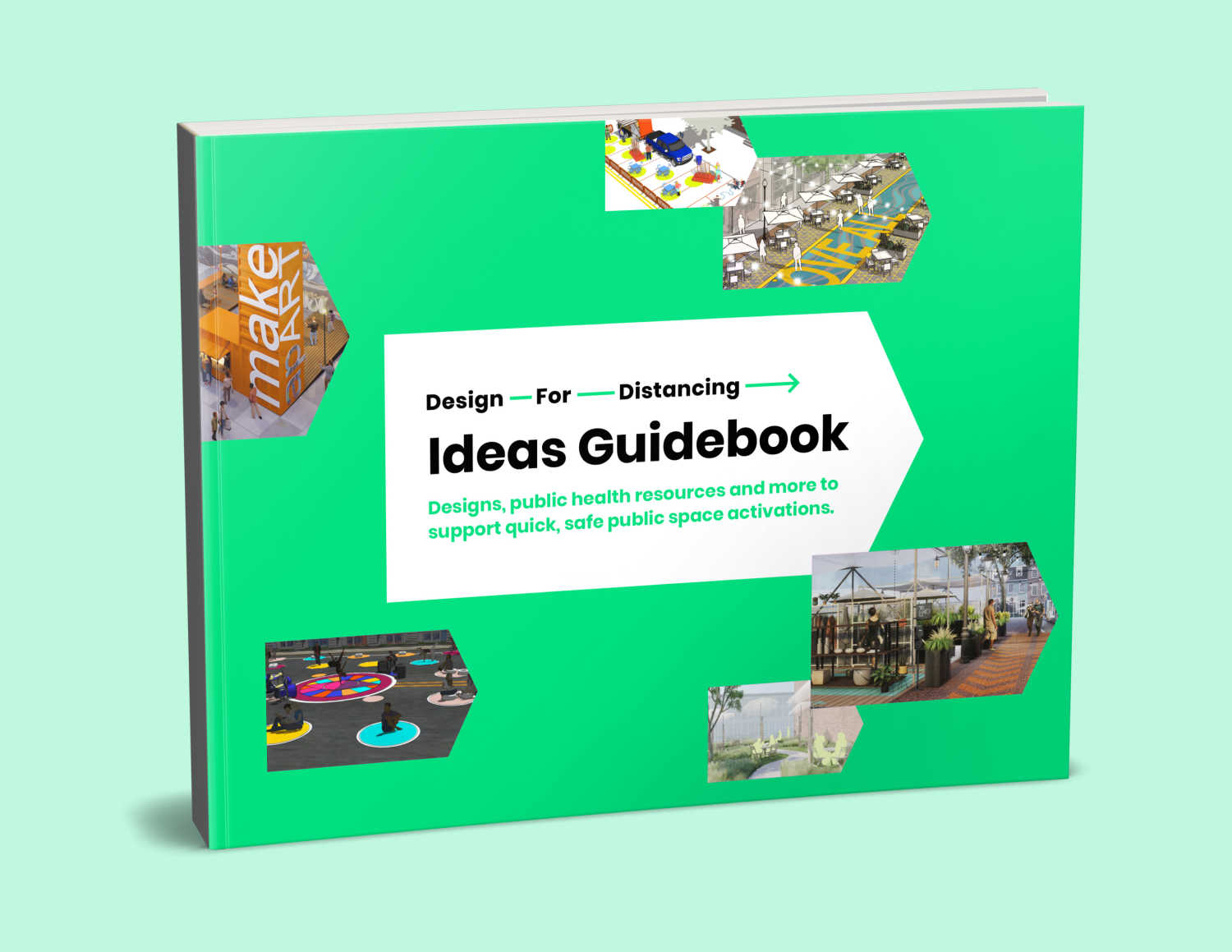
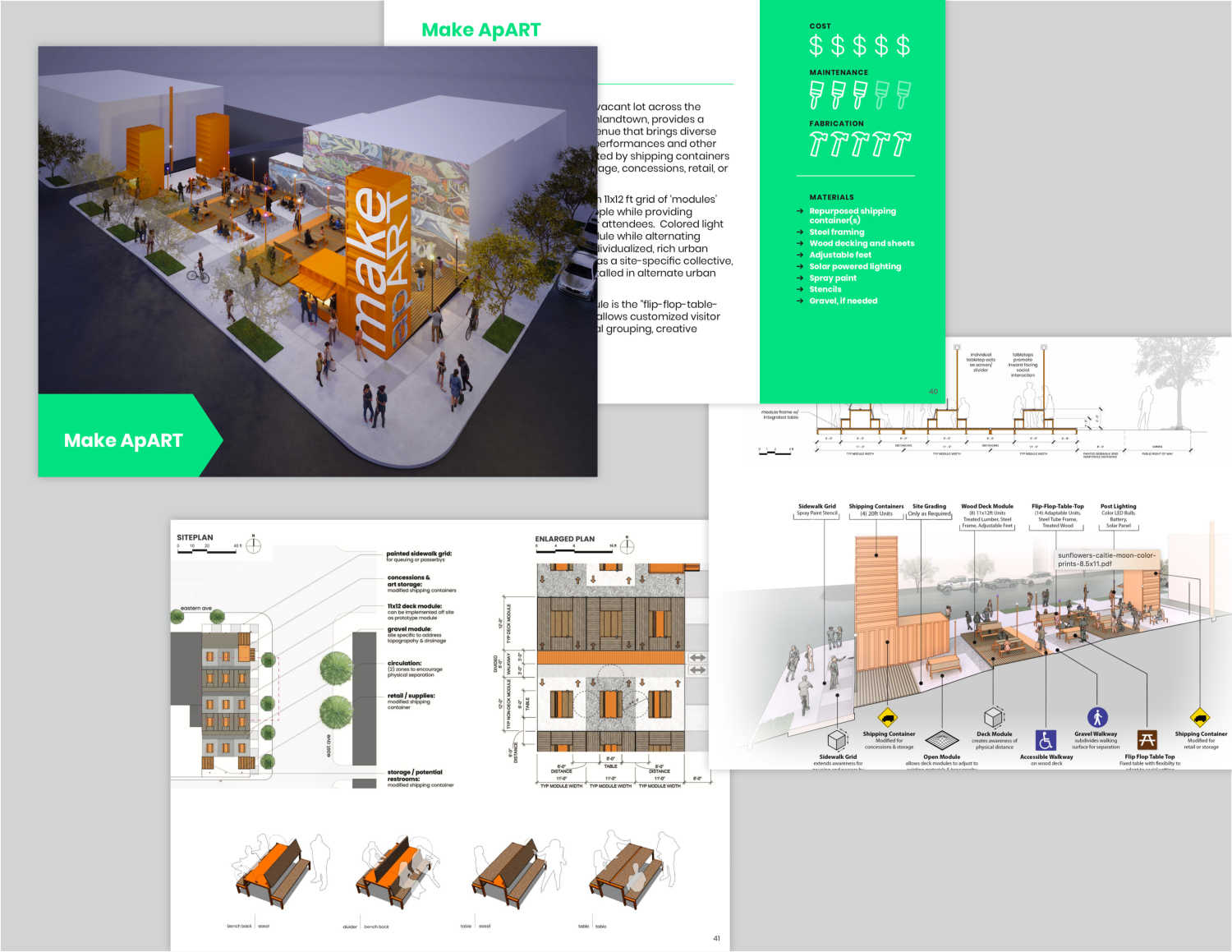
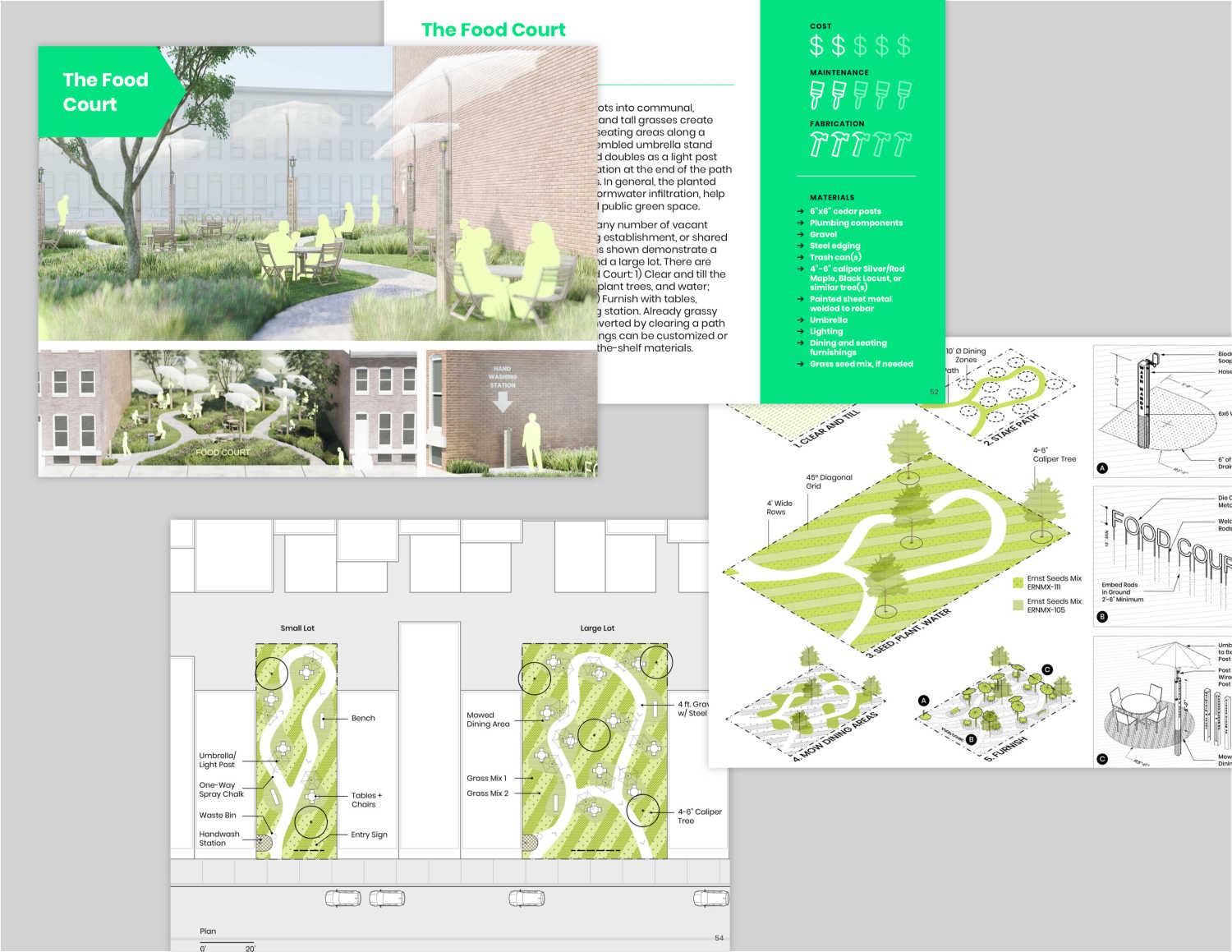

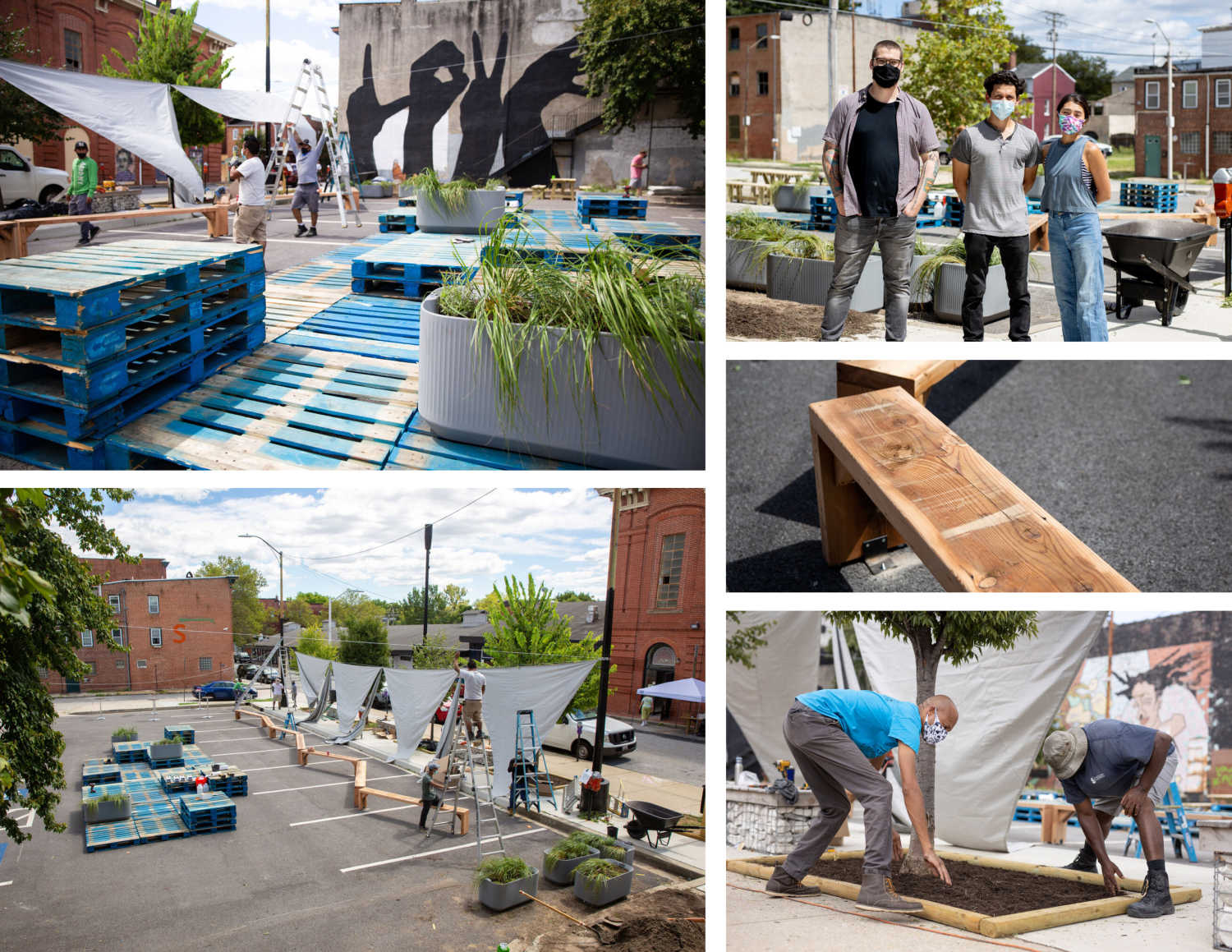
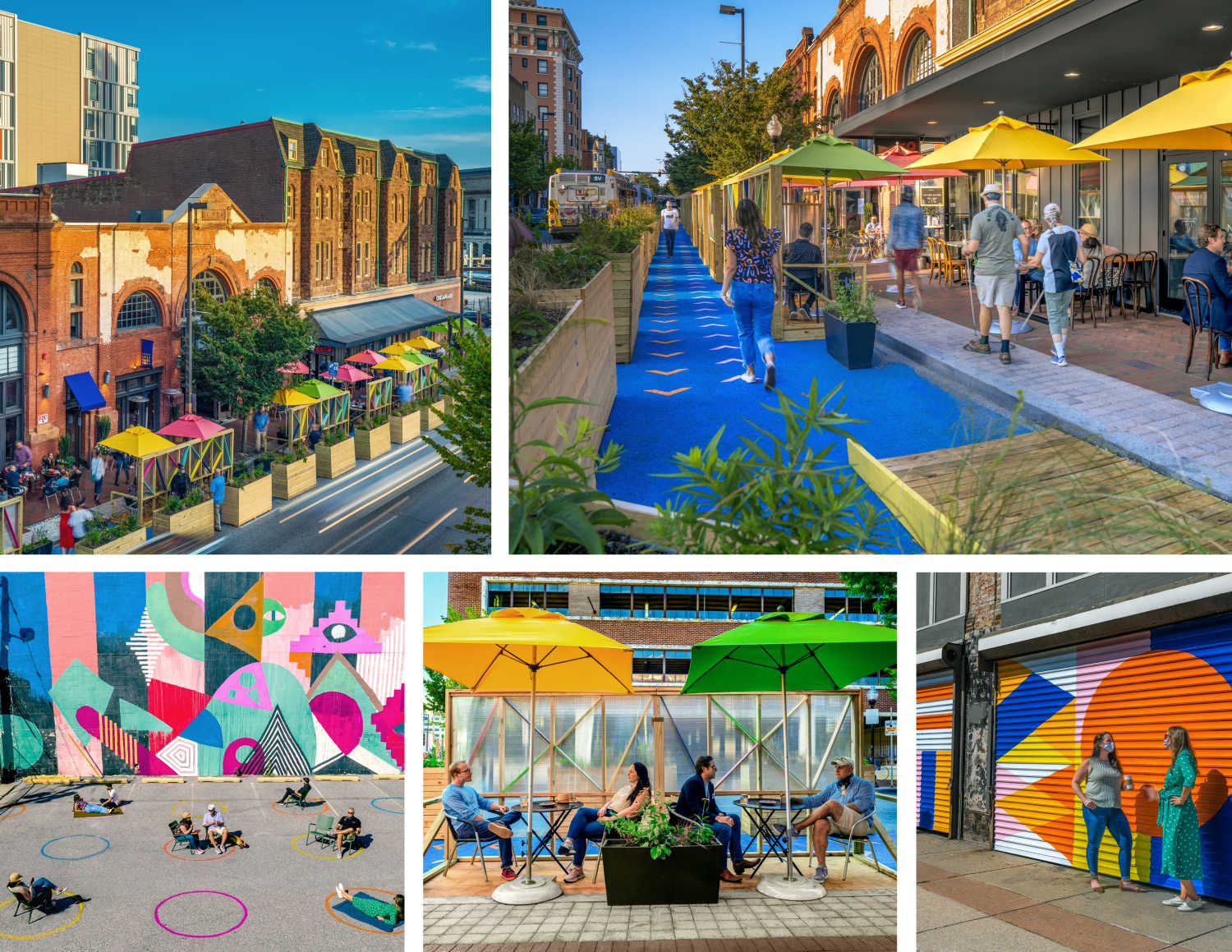
The Design For Distancing Ideas Guidebook
At the onset of COVID-19, the Neighborhood Design Center turned to designers to seek out proposals for helping businesses reopen safely, asking: How might we quickly activate public spaces to support safe, physically distant gathering and the reopening of local businesses? The Ideas Guidebook (2020) features specs from ten designs that transform public space into safe solutions. The guide includes building resources, health guidelines, and more. See the Design For Distancing website here and NDC case study here.
View a case study thesis that includes 6 recommendations to continue the success and build momentum for future projects, and read about it in our blog post.
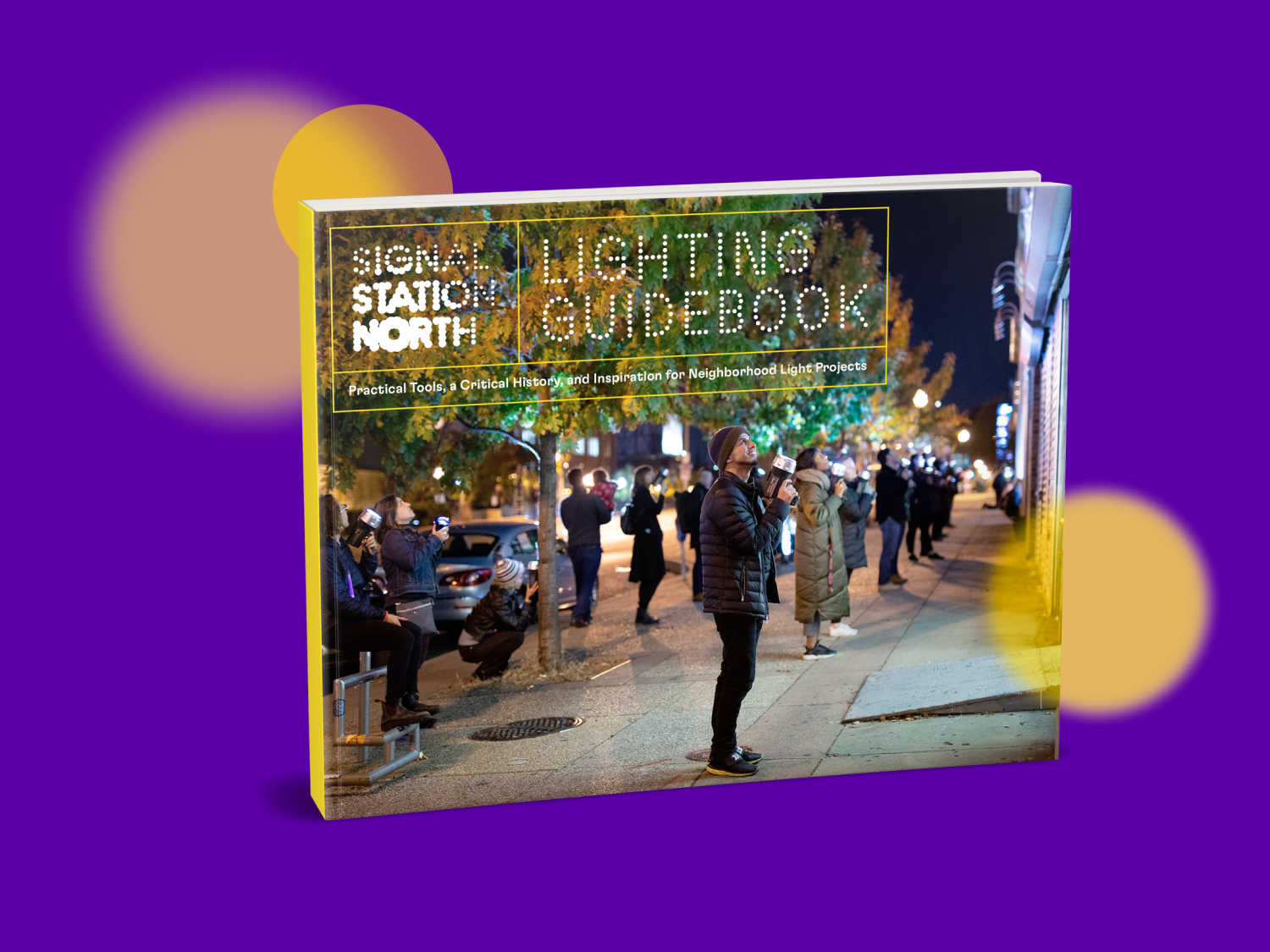
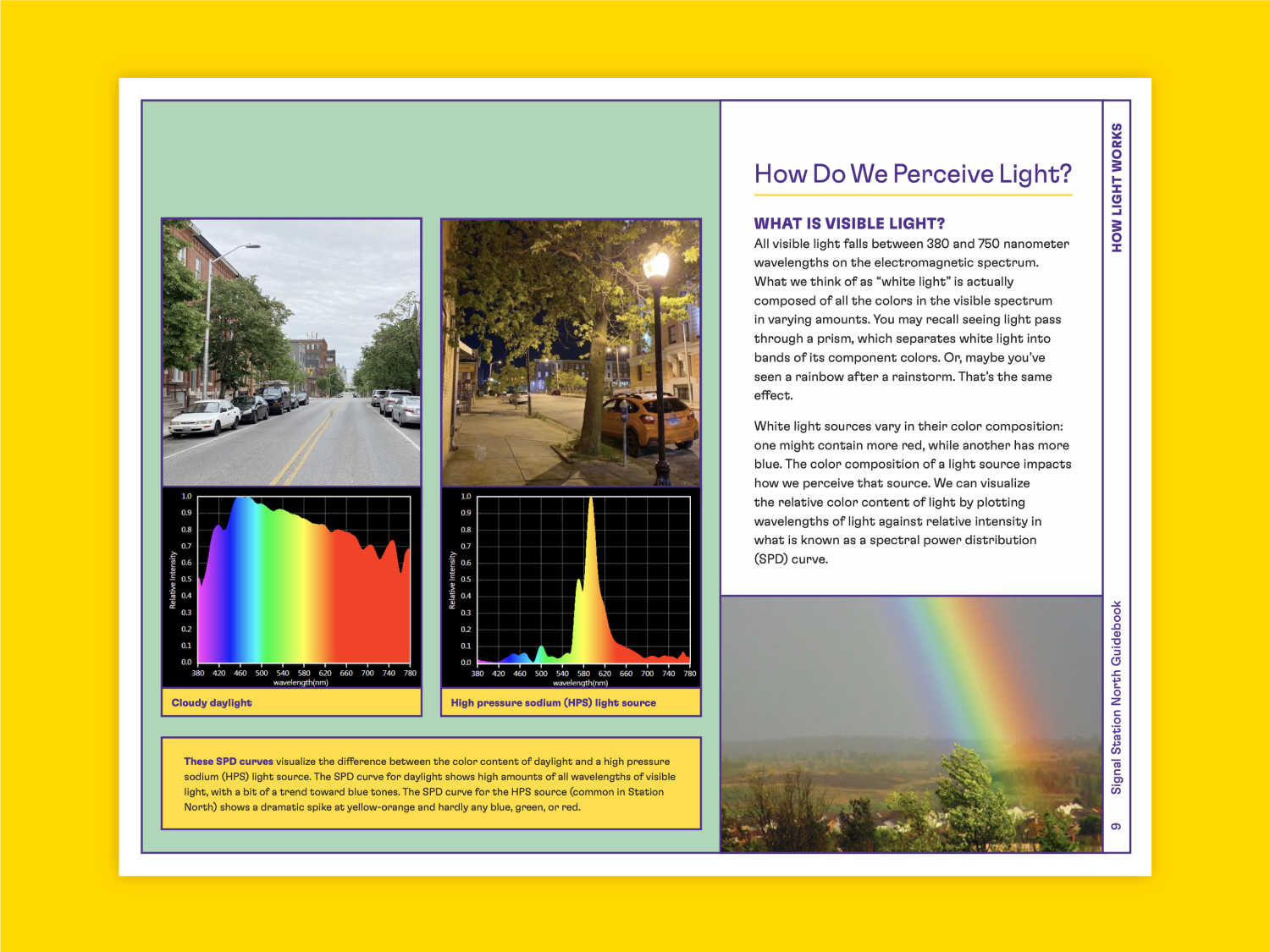
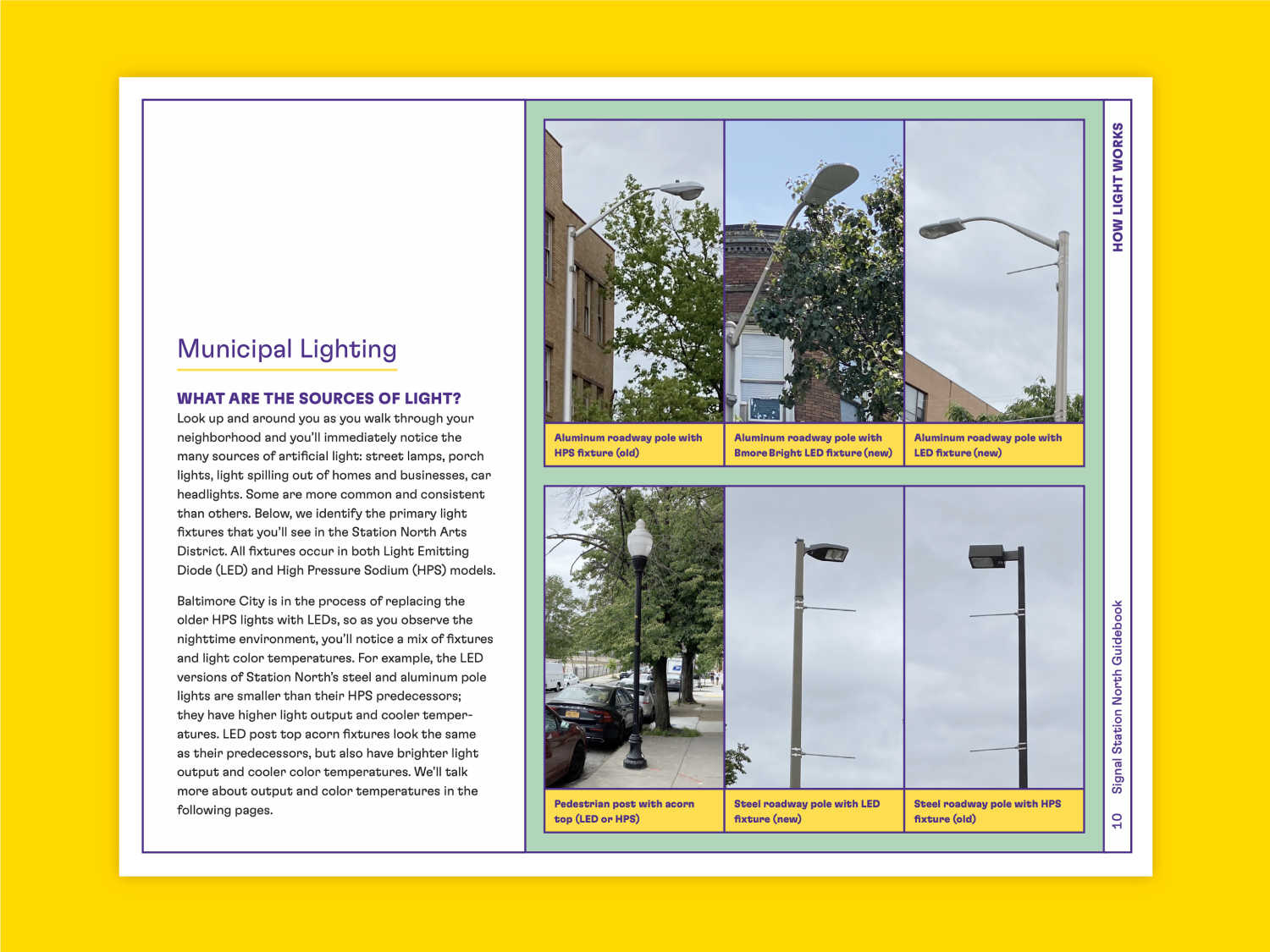
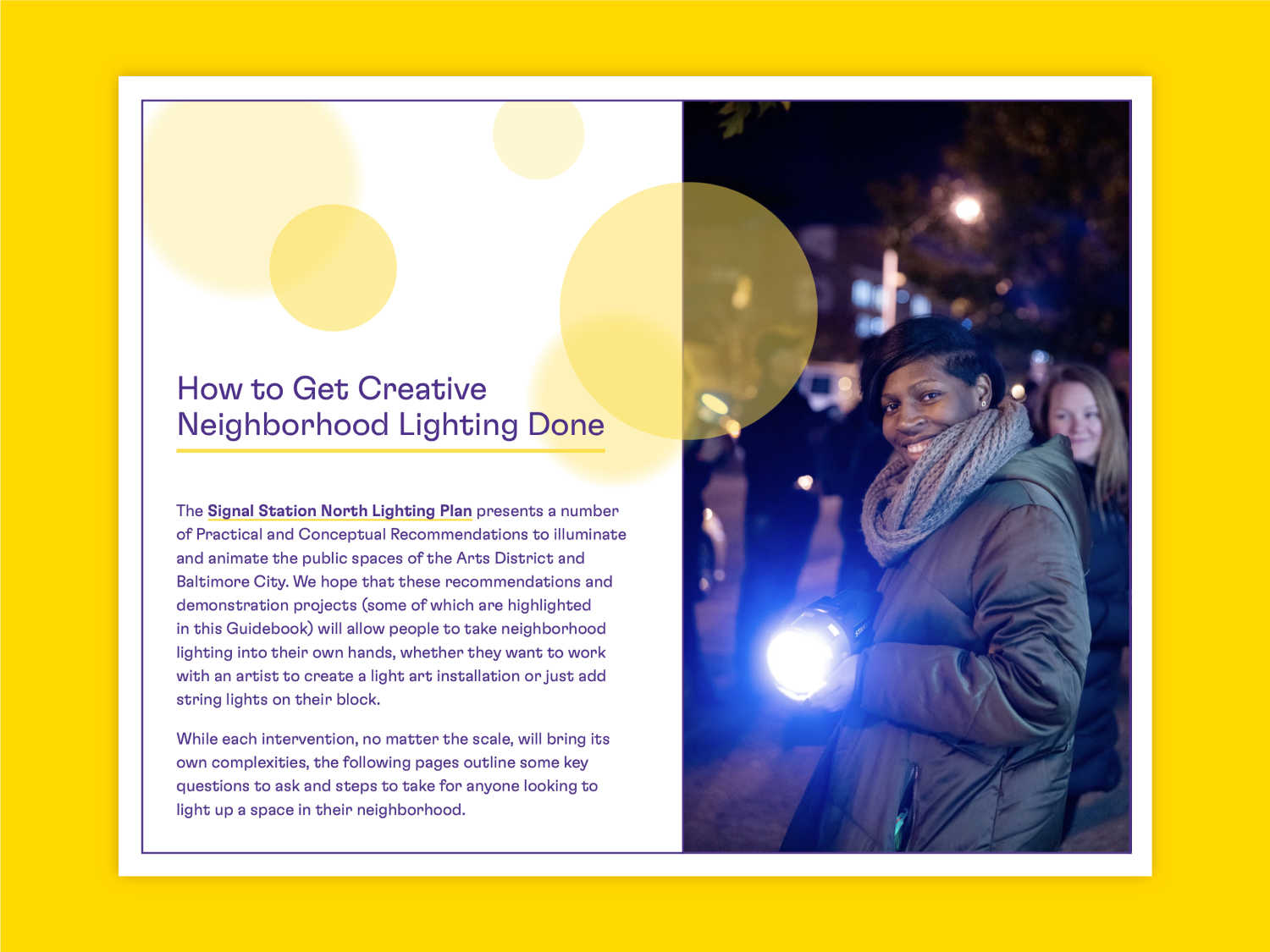

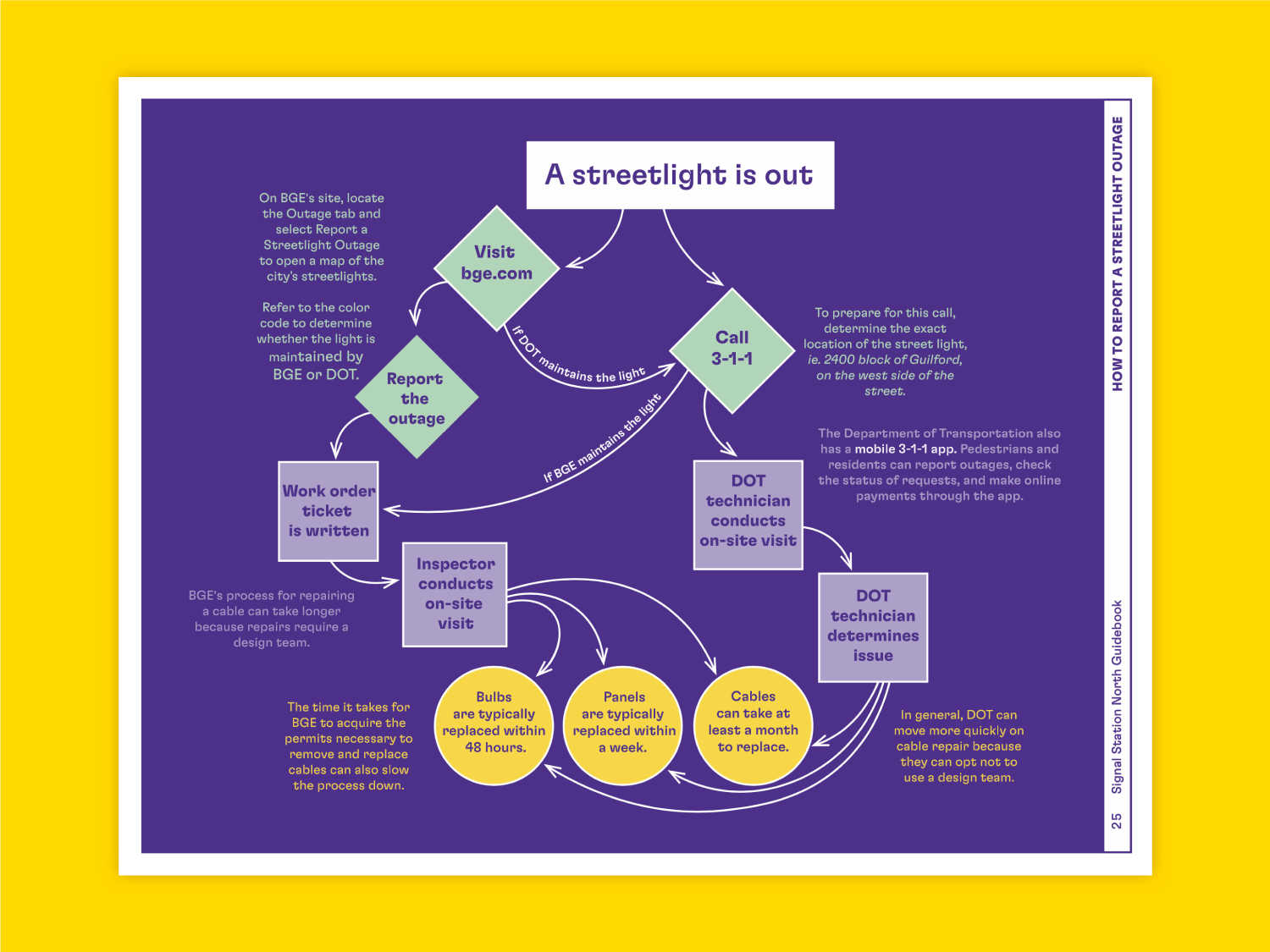

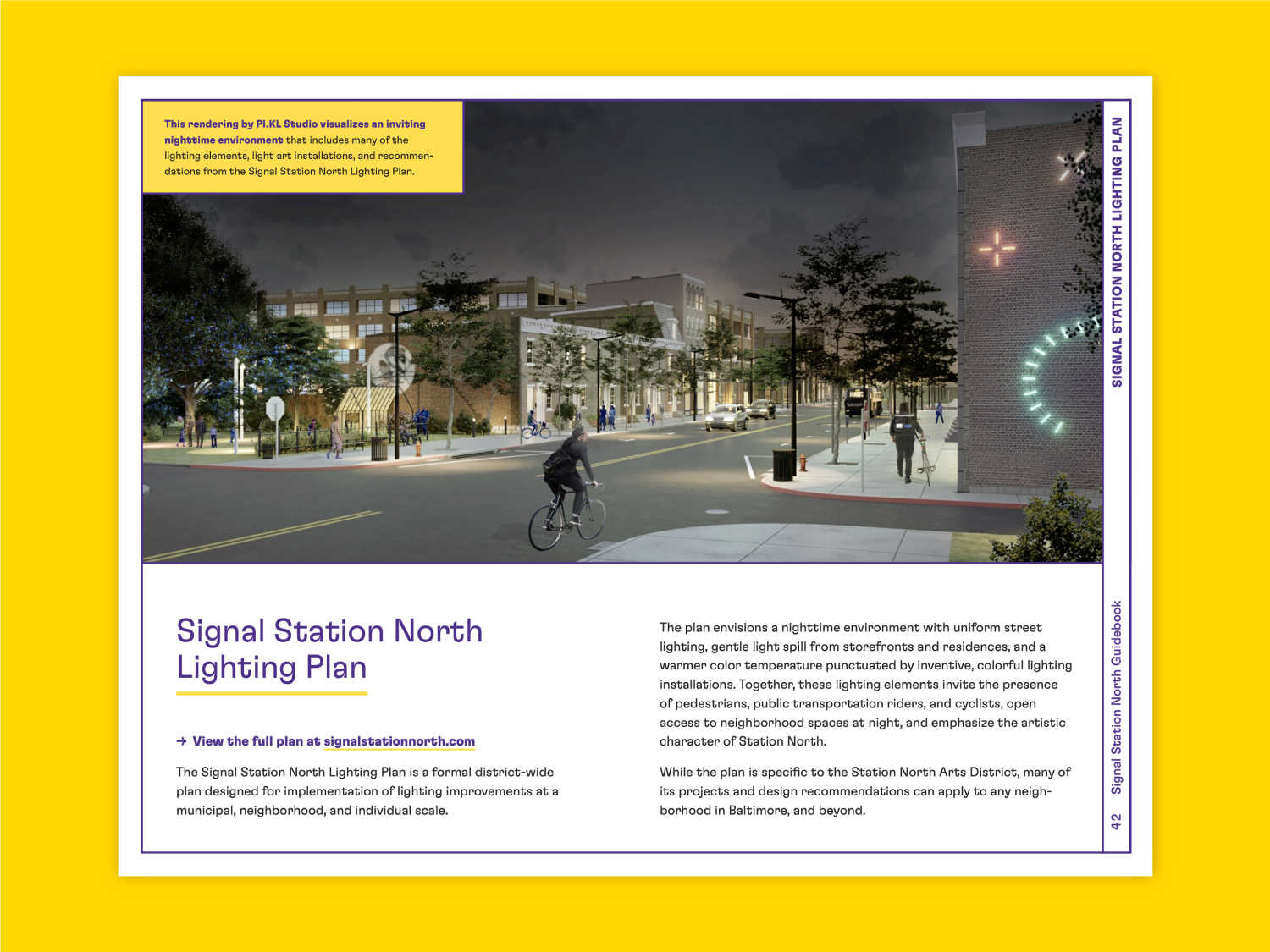
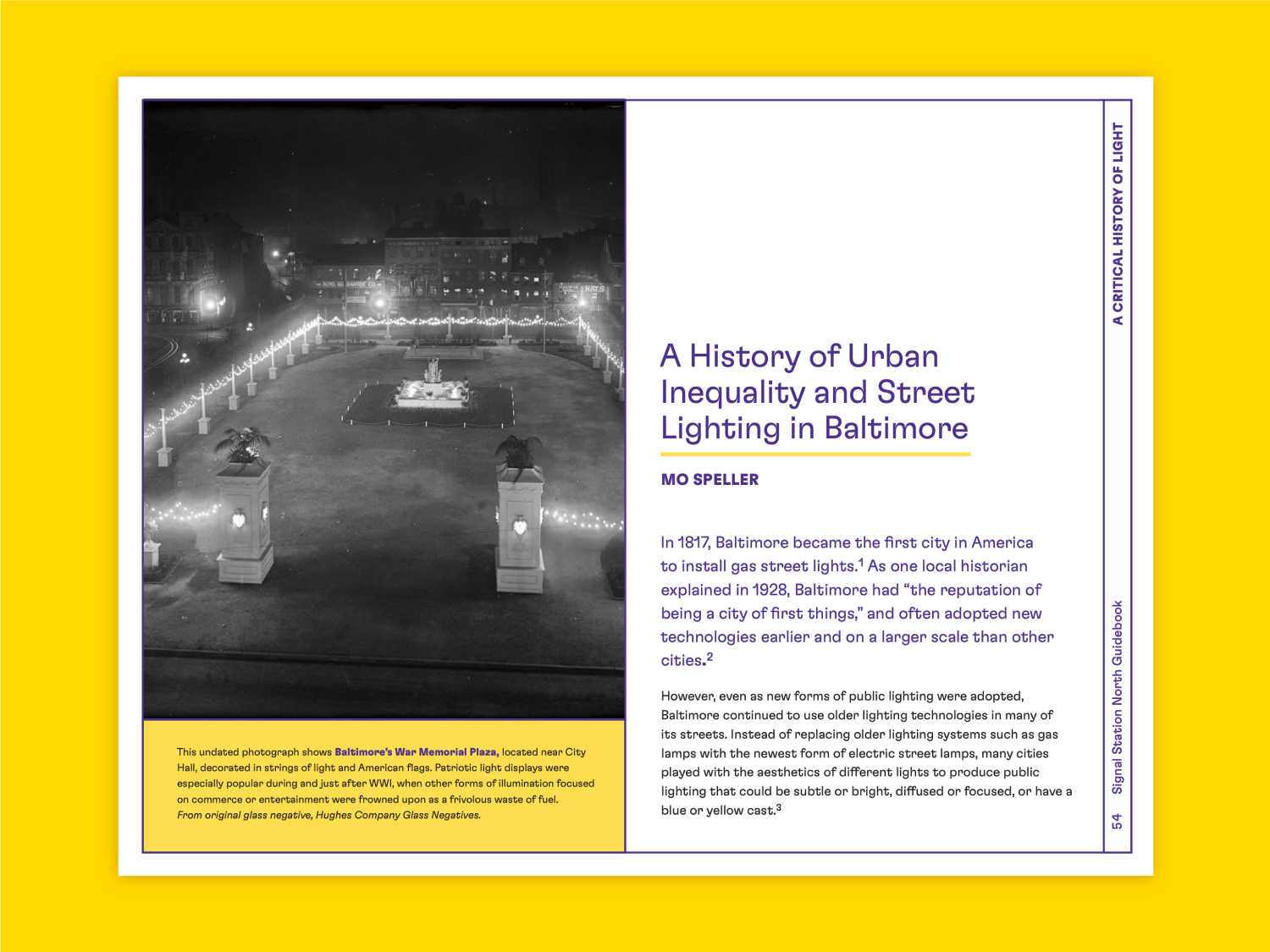
Signal Station North Lighting Guidebook
After two years of community listening, analysis, and design, we compiled our findings and recommendations for bringing creative, collaborative light to Station North — and beyond! This Guidebook (2021) contains practical tools, a critical history, and inspiration for neighborhood light projects. Learn more here.

AIA National Guide on the Architect’s Role in Creating Equitable Communities
This guide makes designers more aware of who will inhabit a space, the neighborhood in which it exists, and the surrounding environment to more sensitively drive equity in their practices. Launched in 2022 by AIA National’s New Urban Agenda Task Force, it was led by NDC and our partner Gensler, guided by an expert steering committee, informed by the experiences of our focus group stakeholders, and shepherded by staff across AIA.
The guide lives as a web resource
And a more detailed PDF report available for download

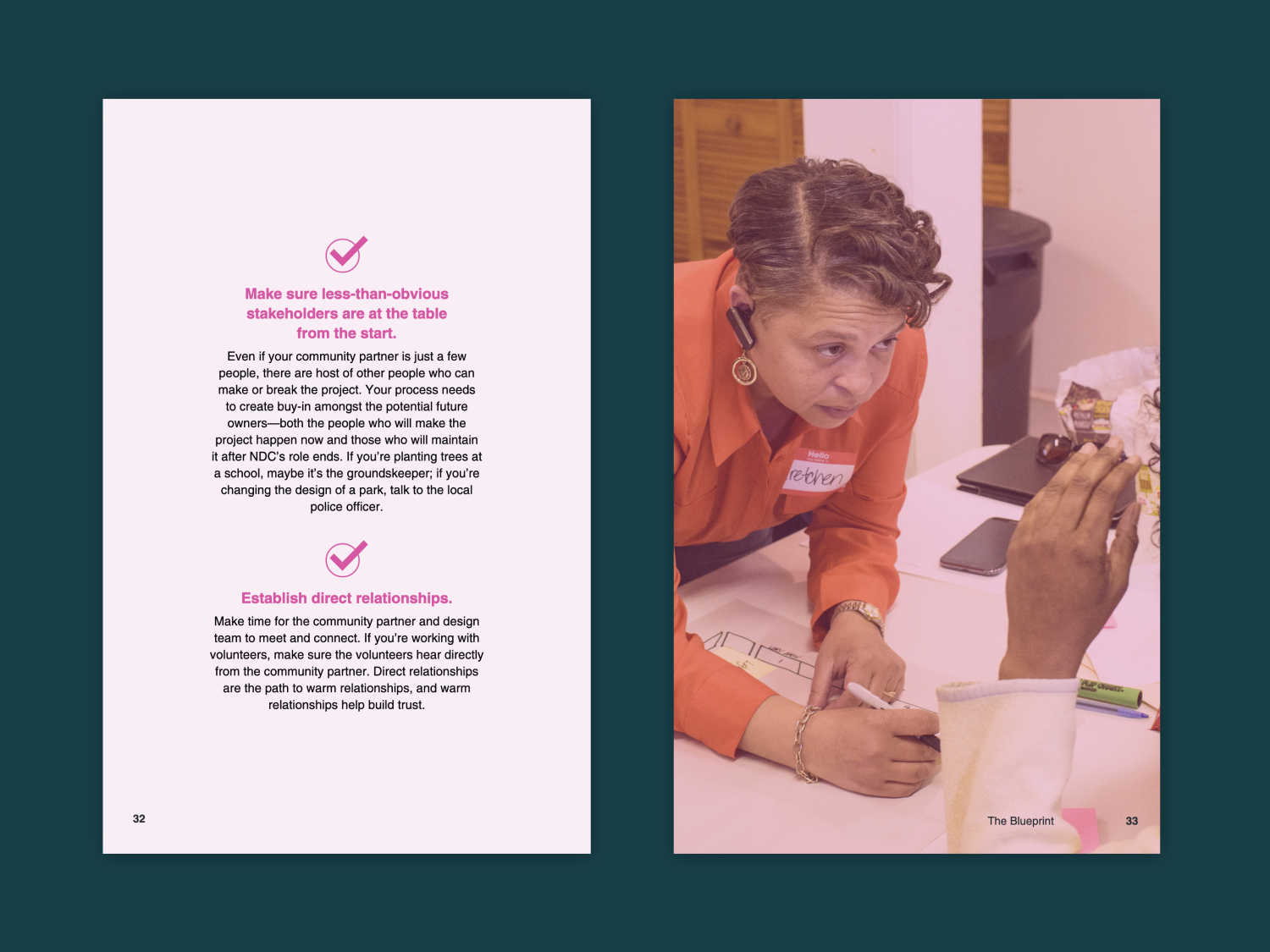

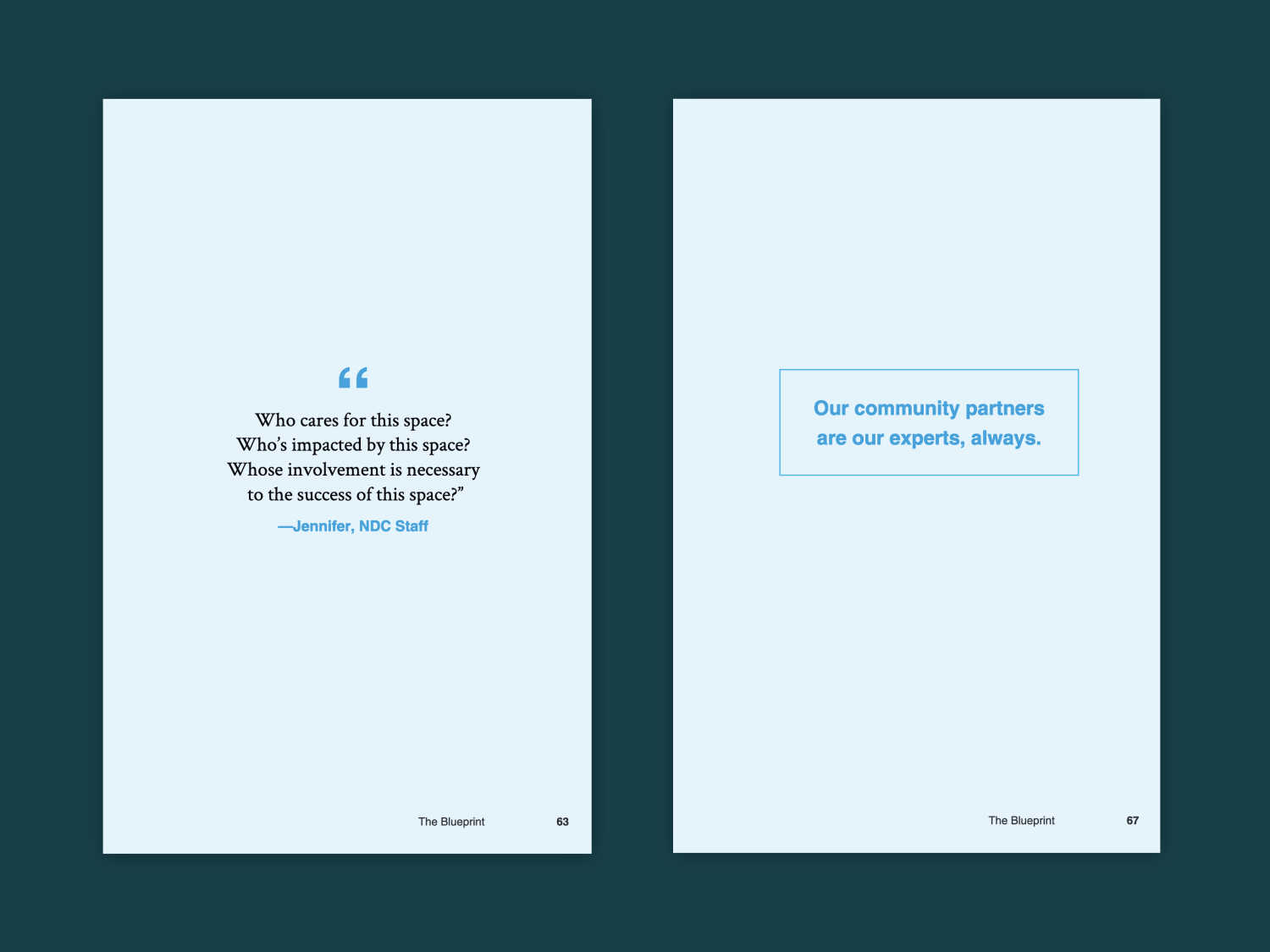
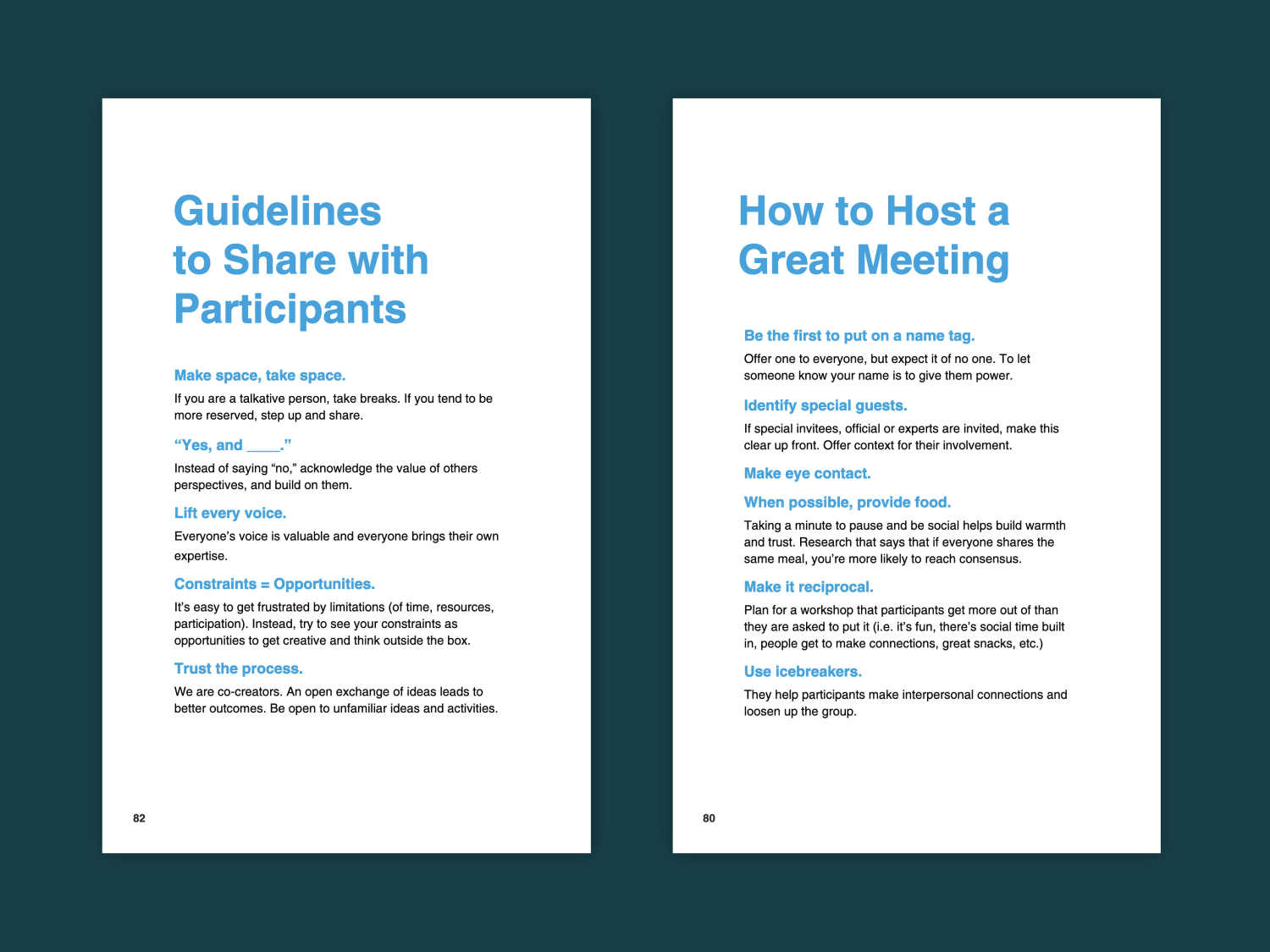
The Blueprint
The Blueprint (2018) is a roadmap of the NDC process for meaningful community engagement. It includes a collection of practices and principles to illustrate our approach to collaborative community design.
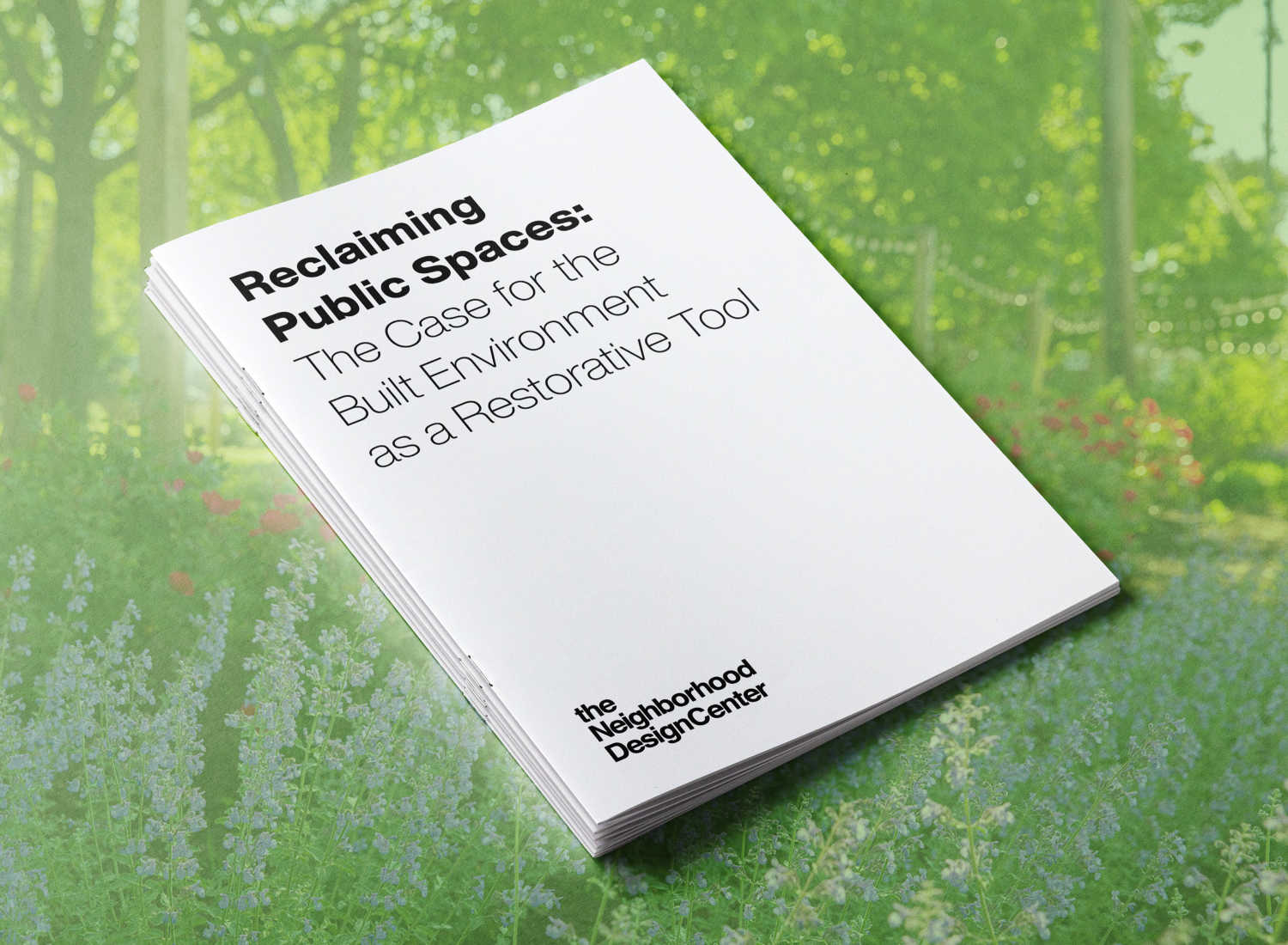
Reclaiming Public Spaces: The case for the built environment as a restorative tool in neighborhoods with high levels of community violence
Published in the peer-reviewed Journal of Community Psychology, this research article (2021) investigates the profound impact that green spaces, playgrounds, and other community-level interventions have on our health.
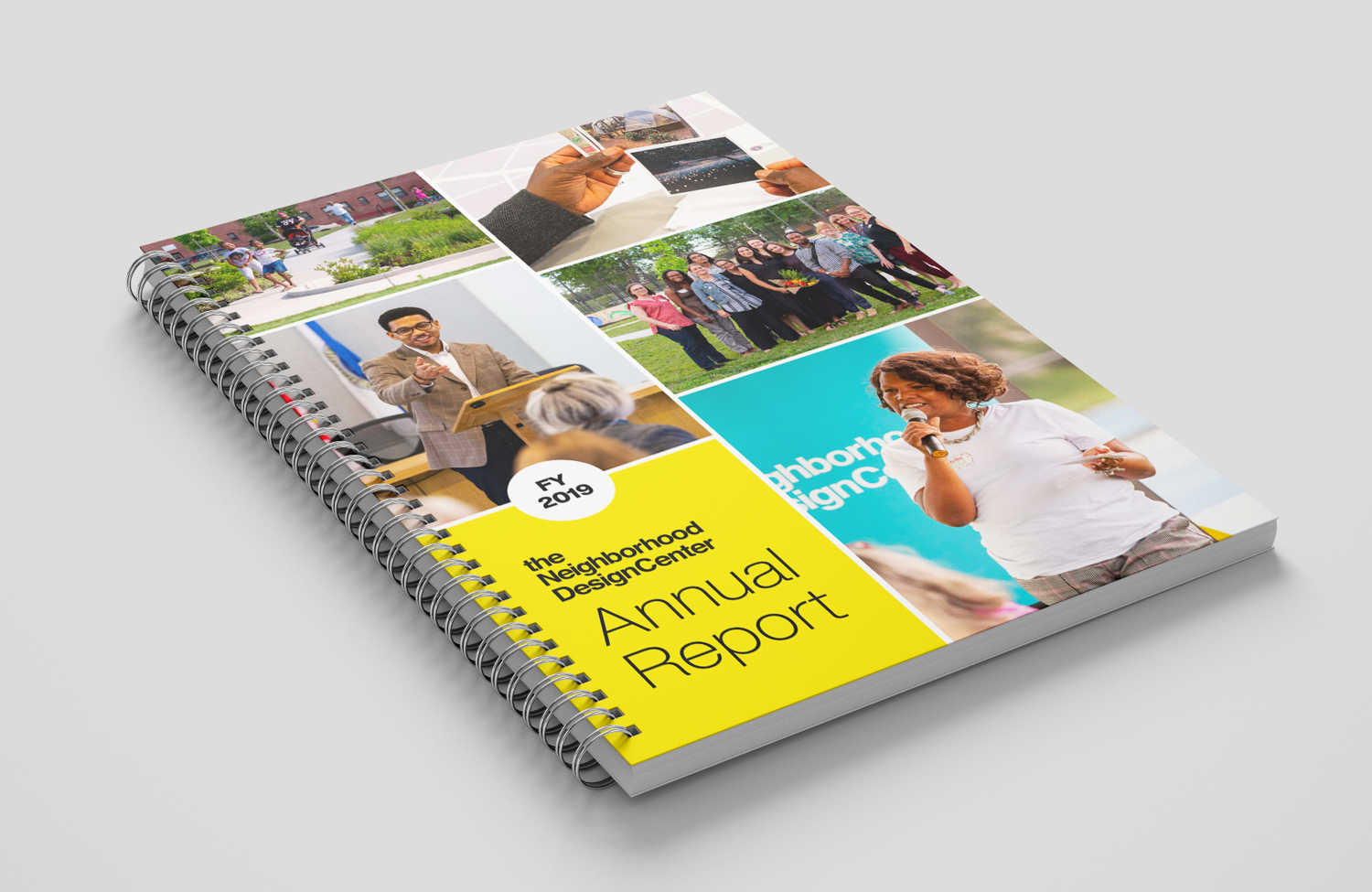

Annual Reports
An inspiring look at what we accomplished in the past few years.